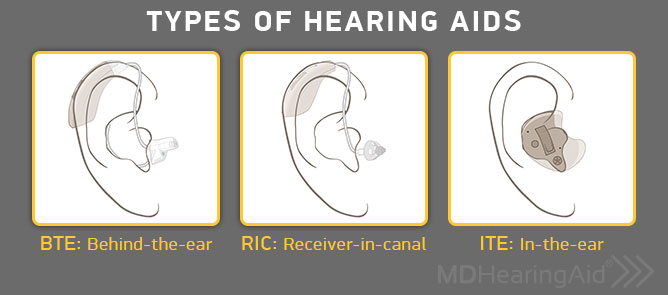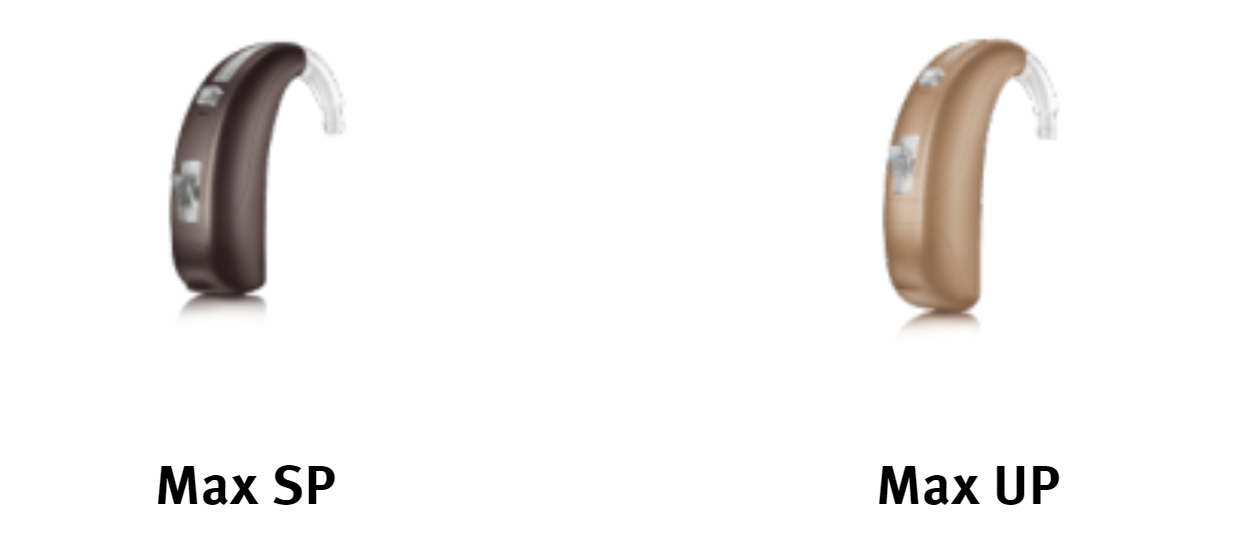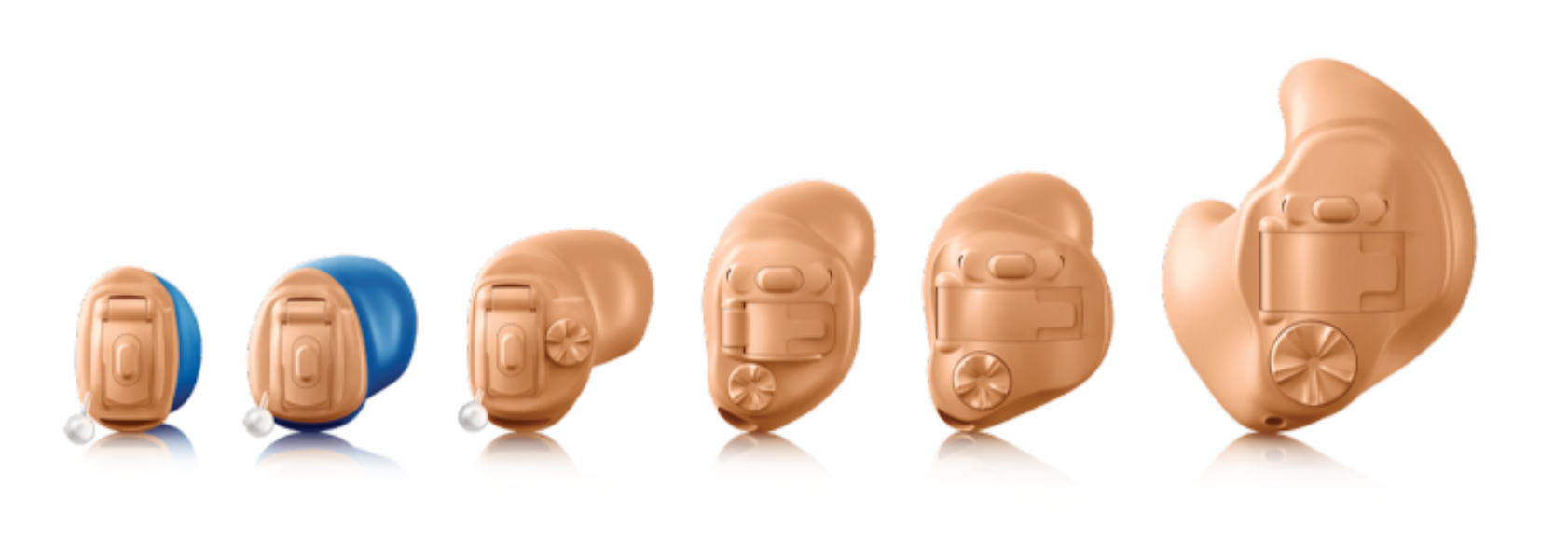Initially founded in 1964, Unitron is known for being the first Canadian hearing aid manufacturer. During its long history in the hearing care industry, Unitron has built a strong reputation for quality and affordability.
However, in 2000, the Swiss-based hearing aid conglomerate, Sonovo, acquired Unitron. Since then, Unitron has undergone dramatic changes to its technologies, business priorities, and pricing strategies over the last two decades.
This begs several questions. Does Unitron still provide the quality, effective, and budget-friendly hearing aids that it is known for? And more importantly, how does Unitron measure up to other budget-friendly brands?
To answer these questions, this guide reviews Unitron’s most popular hearing aids. It also investigates what real customers are saying about the brand. And finally, it looks at how Unitron compares to MDHearing as an affordable alternative.
Please use the following links to navigate this guide:
- Unitron Hearing Aid Styles, Performance Levels, Models, and Technology
- Unitron Hearing Aid Styles
- Unitron Performance Levels
- Unitron Hearing Aid Model Families
- Unitron Hearing Aid Technology
- What Do Unitron Customers Say About the Brand?
- Are Unitron Hearing Aids Affordable?
- A High-Quality Unitron Alternative for 90% Less
Unitron Hearing Aid Styles, Models, and Technology
The Unitron website features a confusing array of hearing aid models, styles, and Performance Levels. This makes it difficult for most consumers to decide which Unitron models and Performance Levels are right for their needs.
That’s why we wrote the following section—to help you understand Unitron’s wide range of products one step at a time. After reading this section, you’ll have a better idea about which style, model, and Performance Level are a good match for you.
Let’s start with a quick review of the different hearing aid styles available from Unitron.
Unitron Hearing Aid Styles
Unitron customers can choose from three hearing aid “styles” or “form factors”:
Behind-the-Ear (BTE): As the name implies, BTE hearing aids rest behind your ear. All of the hearing aid components—including the microphones and speakers—are found in a small plastic casing behind the ear. These hearing aids direct sound to the ear through a thin, clear, plastic tube with an earpiece that inserts into the ear canal.
BTEs offer three benefits over other styles:
1. They are easier to clean and maintain.
2. They are more durable.
3. They have room for larger speakers for more sound amplification. Unlike other hearing aid options, BTEs can offer more power to accommodate patients with severe to profound hearing loss.
All Unitron Stride hearing aids are BTE-style aids.
Receiver-in-Canal (RIC): Similar to BTEs, the RIC style also rests behind the ear. The difference is that the plastic casing behind the ear does not contain any speakers (also known as receivers). RIC hearing aids use a thin receiver wire that passes over the ear and attaches to a receiver that inserts in the ear canal.
RICs offer two benefits over other styles:
1. They are subtly smaller than BTEs.
2. Some users claim that RICs achieve less sound distortion than BTEs because the receiver (speaker) is physically closer to the ear.
All Unitron Moxi hearing aids are RIC-style aids.
In-the-Ear (ITE): The ITE style hearing aid fits completely inside the bowl of the ear. Some ITE aids are fairly large and visible in the ear, while others are so small they disappear completely in the ear canal. Unitron sells five different sizes of ITE aids:
- Full Shell: These fill the entire bowl of the ear and it is apparent that the user is wearing a hearing aid. Full shell ITEs are a good match for patients who have a difficult time holding and inserting small devices.
- Half Shell: These are smaller and less obvious than full shell ITEs, but it is still easy to identify that the user is wearing a hearing aid.
- In-the-Canal (ITC): These are slightly bigger than the ear canal opening. This makes them less visible and more subtle than a half-shell ITE, but it is still easy to see that the user is wearing a hearing aid.
- Completely-in-the-Canal (CIC): These are small enough to insert completely in the ear canal, but they are partially visible.
- Invisible-in-the-Canal (IIC): These are so tiny that they disappear completely inside the ear canal.
ITEs offer the following benefits over other styles:
1. They are the smallest and can also be the most discreet hearing aids.
2. IICs—the smallest ITEs—are so tiny that you cannot detect someone is wearing them.
All Unitron Insera hearing aids are ITE-style aids.
Unitron Performance Levels
The level of technology featured in Unitron hearing aids is indicated by “Performance Levels” of 500, 600, 700, 800, and Pro. At the “500” level, Unitron hearing aids come with basic, entry-level technology. They are also the most affordable. At the “Pro” level, Unitron hearing aids have the most advanced technology and customization options. They are also the most expensive.
Here is a description of each performance level:
- Performance Level “Pro”: Features the latest technology from Unitron to clarify sound in a wide variety of listening environments. They offer automatic adjustments according to changing sound conditions. They also offer directionality of microphones to focus on the most important sounds.
- Performance Level “800”: Improves speech directionality in noisy and complex sound environments. They also include features for better music listening.
- Performance Level “700”: Improves front directional speech comprehension when background noise is present. They also optimize sound realism in quiet listening situations.
- Performance Level “600”: Optimizes speech comprehension in a variety of environments yet they tend to work best in less complex sound situations.
- Performance Level “500”: Magnifies and clarifies sound in quiet environments. They also include some features for improving sound in noisy situations.
Hearing loss patients who only need a basic hearing aid can save money by selecting a lower Unitron Performance Level. However, even an entry-level set of Unitron aids will cost at least $2,000 or more per pair.
Unitron Hearing Aid Model “Families”
Unitron offers five main hearing aid model families (Moxi, Stride, Insera, Shine Rev, and Max). Each hearing aid family offers a range of devices in different styles (BTE, RIC, or ITE) and sizes with varying levels of technology and features. Once you select the hearing aid family you want, you can select a style and Performance Level according to your hearing requirements.
Let’s take a look at the unique characteristics of each Unitron hearing aid family:
Unitron Moxi
All Moxi family hearing aids are Receiver-in-Canal (RIC) style devices. These hearing aids boast a stylish form factor with some interesting tech features like “Natural Sound Balance.” This technology balances sound amplification to provide a more natural listening experience.
As RIC-style hearing aids, Moxi devices do not have enough amplification power to help those with profound hearing loss. However, they offer enough amplification for patients with mild to moderately-severe hearing loss.
The Unitron Moxi family includes all levels of hearing aid technology. Moxi hearing aids may include Bluetooth Sound Streaming, Log It All App, SoundCore Technology, Binaural Processing, and more. Skip to the “Unitron Technology Features” section for descriptions of these technologies.
Image Source: Unitron.com
Three of the most popular Moxi hearing aids are:
- Moxi All: The Moxi All focuses on connectivity features and connects with the widest range of smartphones. This hearing aid can also connect with televisions if you purchase an additional $200+ connector (which can be complicated to set up). The Moxi All Pro level comes with the Remote Plus App, which allows you to make hearing aid adjustments from your smartphone. The Remote Plus App also permits a hearing aid specialist to remotely fine-tune your hearing aids without needing to leave your home. Finally, the Moxi All “R” is rechargeable. This hearing aid is 27 mm long.
- Moxi Now: The Moxi Now offers the smallest form factor in the Moxi family. This device includes all of the latest Unitron technology found at the “Pro” level, but the hearing aid is 20 mm long.
- Moxi Fit: The Moxi Fit is an entry-level hearing aid with simple push-button controls. This hearing aid does not offer sound streaming from smartphones. But it does connect to smartphones so users can remotely control basic settings. The Moxi Fit is an excellent option for those who want basic hearing assistance at a lower price point. This hearing aid is 28 mm long.
Other Moxi models include the Moxi Kiss, which features a larger, 312-size battery. The Moxi Dura features a rugged design for active, outdoor lifestyles. Finally, the Jump R functions as a rechargeable hearing aid.
Unitron Stride
All Unitron Stride hearing aids are Behind-the-Ear (BTE) style aids. As BTE devices, these hearing aids can offer more power than the Moxi family, so they can fit patients with mild to profound hearing loss. Depending on the Performance Level, Stride hearing aids may include features like SoundCore Technology, Binaural Processing, SpeechPro, Spacial Awareness, SoundNav, and more. Skip to the “Unitron Technology Features'' section for descriptions of these technologies.
Image Source: Unitron.com
Four popular Unitron Stride hearing aids include:
- Stride M: Offers high-power sound amplification, a telecoil, and a 312 size battery.
- Stride M R: Serves as the rechargeable version of the Stride M.
- Stride P: Features dual controls so hearing aid users can adjust their devices from a smartphone app or buttons on the hearing aid itself.
- Stride P Dura: Offers moisture resistance and durability for athletes and individuals working in rugged conditions.
Unitron Max
All Unitron Max hearing aids are Behind-the-Ear (BTE) style aids. These are the most powerful Unitron aids. They offer the highest levels of amplification for individuals with severe to profound hearing loss. Max aids provide access to unique features and capabilities designed for those with profound hearing loss. These features may include technologies such as Super Power Presets, Power Adaption Manager, Sound Conductor SP, Frequency Compression 2, and more. Skip to the “Unitron Technology Features” section for descriptions of these technologies.
Image Source: Unitron.com
The Unitron Max family includes two high-powered hearing aid models:
- Max SP: The Max SP includes a long-lasting 13 battery and a durable design.
- Max Up: The Max Up includes an extra-long-lasting 675 battery for the greatest power and continuous use.
Unitron Insera
All Unitron Insera hearing aids are In-the-Ear (ITE) style aids. Therefore, if your goal is to hide the fact that you’re wearing a hearing aid, the Insera family could be an excellent choice. Due to their ITE style, Insera hearing aids require a specialist to make a 3D model of your ear for the perfect fit. These devices may include Unitron features such as SoundCore Technology, SpeechPro, Spatial Awareness, SoundNav, Sound Conductor, Log-It-All, and more. Skip to the “Unitron Technology Features” section for descriptions of these technologies.
Image Source: Unitron.com
The Unitron Insera family includes the following variations:
- Full Shell, Canal/Half Shell and Mini Canal: These larger styles of Insera aids offer lower prices. The larger sizes are also good for hearing loss patients with dexterity challenges and/or lower budgets.
- “Completely-in-Canal” (CIC): These Insera models are more discreet but still partially visible.
- “Invisible-in-Canal” (IIC): These Insera models are so small that they disappear entirely in the ear canal.
Unitron Technology Features
Depending on the hearing aid style and model family, Unitron hearing aids may or may not come with some of the technology features below. The following list organizes Unitron technology features based on model families. However, many of these features will not be available at the lowest Performance Levels.
Features available from the Moxi, Stride, Insera, and Max families:
- SoundCore: Monitors the current listening conditions. Then it makes automatic adjustments to the hearing aid sound settings.
Features available from the Moxi, Stride, and Insera families only:
- SpeechPro: Optimizes speech understanding and speech localization from various directions. This helps clarify voices when background noise is present.
- Spatial Awareness: Helps patients sense where different sounds are coming from.
- SoundNav: Monitors sound conditions to help SoundCore technology. Then it adjusts the hearing aid sound settings to different sound environments.
- Sound Conductor: Automatically changes hearing aid settings based on different types of conversations.
- Binaural Spatial Processing: Helps hearing aid wearers determine the directionality of speech sounds.
- SpeechZone: Allows the hearing aid to focus on front-facing speech sounds in noisy conditions.
- Log It All: Records sound information and conversations so patients and hearing care specialists can review the sounds later to optimize hearing aid settings.
- Antishock: Smooths out loud, jarring noises to prevent hearing aid wearers from being startled by sudden noises.
- Automatic Adaptation Manager: Gradually transitions new hearing aid wearers into higher levels of amplification, making the transition to hearing aids more comfortable.
- Binaural Phone: Wirelessly streams phone audio into both ears.
Features available from the Stride and Insera families only:
- Frequency Compression: Helps patients with severe to profound hearing loss by changing sounds from frequencies where hearing is the most damaged and shifting sounds into audible frequencies.
Features available from the Moxi family only:
- Natural Sound Balance: Provides a more natural listening experience by removing sound distortions caused by snugly fitting earpieces.
Features available from the Max family only:
- Sound Conductor SP: Automatically adjusts hearing aid settings to optimize speech understanding—while maintaining background sound awareness in different listening conditions. This feature helps patients with severe to profound hearing loss.
- Frequency Compression 2: Automatically adjusts hearing aid settings and sound frequencies to help patients with profound hearing loss understand high-frequency sounds.
- Super Power Presets: Helps patients with severe to profound hearing loss select the best sound settings for their needs with three pre-set sound profiles that utilize different sound amplification strategies: Classic, Conventional, and Current.
What Do Unitron Customers Say About the Brand?
Reviews from Unitron customers show that some patients are highly satisfied with their Unitron hearing aids while others are extremely dissatisfied. On the ConsumerAffairs website, Unitron received an average rating of 2 out of 5 stars. On the ConsumerAdvocate website, Unitron received an average rating of 3.5 out of 5 stars.
The Unitron user reviews below provide an excellent look at how real hearing aid patients are experiencing the quality, reliability, and customer service of the Unitron hearing aid brand.
Negative Unitron User Reviews
Unfavorable reviews from dissatisfied Unitron customers:
An absolute waste of $4,500.00. I purchased the Unitron T Moxi All 800 because I wanted the connection to a smartphone and the conversation in a noisy environment functions. So far no problem with the phone function but the conversation in noisy environments is hopeless. The overall sound quality is absolutely abysmal in everyday situations. I have been back to the audiologist many many times trying to get the HEARING function of the aids suitable for me. Whilst I can hear people speaking most of the time I cannot hear clearly. Certain noises are PAINFUL. Previously I had a Widex...so much better.” – Carmel, April 10, 2019
My elderly mom purchased these hearing aids and shortly after realized she could not use them. Bothered her ears, felt way too big, gave her headaches, etc. Because she did not return right away even though she was not using them brand new in box. Doctor will not reverse the $2,900 dollar charge. She doesn’t even have them and gave them back. We have been disputing the charge with my Care Credit account for months. Please assist. I have all the paperwork. I live in a different state than my mom. I feel she is not a good candidate for aids. I feel she didn’t understand the contract nor hear clearly and feel she was taken advantage of. Thank you.” – Renee, Sept. 6, 2019
I have had L and R Unitron hearing aids for about a year and have never received a level of clarity that enables me to hear conversation across a small group of people not ten feet from me nor a person across from me in a booth in a restaurant. Paid $6,000 for the pair from a hearing specialist. Why?” – J.R., Sept. 25, 2018
I am on my third set of unitrons. Frankly the best performing for me where my previous Moxi 20s which had no Bluetooth features. Seems the more features added above and beyond hearing processing abilities are of limited value for most users and add to cost and potential malfunctions. Dito with the rechargeable battery feature which falls into that category. When my current unions start giving trouble I am seriously considering repairing my old aids and keep the newest aids as spares. Do not misinterpret what I am saying as a negative review of Unitron far from it these have been overall a fine product and I recommend the brand with little reservations.” – Poorthing, March 9, 2018
Positive Unitron User Reviews
Favorable reviews from satisfied Unitron customers:
I got my first Unitron BTE hearing aid in 2007 for the right ear and one for the left ear the following year. I have been using them for the past 15-16 years without any problems from day one. Maybe I have to replace them, but if they work, why change. Am I one of the lucky users?” – Cilliers V., June 4, 2022
I have the Unitron Moxi Pro and they are excellent. I had trouble with the rechargeable batteries and new ones and charger will mail to me free. The Z power rechargeable battery company went bankrupt. So your audiologist should be in contact with either free batteries for the remaining warranty or to upgrade for a small fee. I am upgrading to the Discover Next Jump R T. It has bluetooth to both hearing aids versus one. 20 hearing environments vs 7. A simple email to my audiologist is all it took to upgrade. I have never paid mailing costs to return or receive items. I think a lot of what is happening is not Unitron, but with your audiologist. I have reverse hearing loss, which is difficult to fit, but I have an audiologist who has a ton of experience and did it on one fitting. So those experiencing difficulty with rechargeable battery issues, there is an upgrade. Best place ever. My parents both had hearing aids... so I knew what I wanted.” – Ann, Oct. 13, 2020
I have been using the very expensive Unitron Maxi Yuu for 5 or more years. They are my first hearing aids and have been trouble-free. One did fail when wet by shower. My audiologist had it replaced under warranty. My audiologist also sent each one back for refurbishment near the end of the warranty period. For the first year, the ear guards needed weekly cleaning. They were replaced with re-designed pair that have lasted 4 years with minimal maintenance. I was given a kit to replace the inner microphone screens. I have used about 7 of these over the five years. I am totally pleased.” – John, Aug. 30, 2015
Are Unitron Hearing Aids Affordable?
Although Unitron has a reputation for being a budget-friendly brand, the high prices of Unitron hearing aids show they are not an affordable hearing aid brand.
Depending on the model and Performance Level, most hearing loss patients can expect to spend between $2,500 to $7,000 for a pair of Unitron hearing aids. Unitron prices can also vary from clinic to clinic. For example, it’s not uncommon for hearing clinics in affluent parts of town to charge an extra $1,000 or more per aid. Therefore, patients might find better deals by checking prices at several clinics before making a purchase decision.
There are two primary reasons why Unitron hearing aids are so expensive:
- Manufacturer markups: A handful of manufacturers (Unitron, Widex, Phonak, Oticon, etc.) have dominated the hearing aid market for decades. This has allowed them to set their prices unreasonably high by marking up the wholesale cost of their products by as much as $1,000 or more per hearing aid.
- Hearing clinic retail markups: Hearing clinics add retail markups—often to the tune of $1,000 per ear—to the price of hearing aids in order to pay for the cost of maintaining a physical store and employing a team of audiologists and hearing specialists.
Many patients will “bite the bullet” and pay the high price for Unitron hearing aids. However, a large portion of Americans on limited budgets simply cannot afford to pay thousands of dollars to treat their hearing loss.
If you’d like to save thousands of dollars on the price of your hearing aids, our affordable hearing aid solutions at MDHearing could be for you. MDHearing skips the traditional, in-person hearing clinic and sends high-quality, FDA-registered hearing aids directly to your home. Best of all, aids from MDHearing cost thousands of dollars less than the price of Unitron and other hearing aid brands (starting at just $299.98 a pair). Click here to browse hearing aids from MDHearing.
A High-Quality Unitron Alternative for 90% Less
Highly affordable, FDA-registered hearing aids from MDHearing offer a viable alternative to Unitron. With prices starting at just $299.98 a pair, MDHearing keeps the cost of its hearing aids low with the following strategies:
- Eliminating manufacturer and hearing clinic markups: MDHearing manufactures its own hearing aids and sends them directly to customers. This empowers MDHearing to keep costs low by eliminating exorbitant hearing aid and hearing clinic markups.
- Delivering hearing aids directly to customer doors: By shipping hearing aids directly to customers, MDHearing eliminates the high cost of maintaining brick-and-mortar retail locations.
- Pursuing a business strategy to lower the cost of quality hearing aids. MDHearing has the primary goal of providing high-quality hearing aids to hearing loss patients for a fraction of the cost of conventional aids. With this in mind, MDHearing is constantly pursuing new business and design strategies to lower the overall cost of treating hearing loss. By comparison, other manufacturers pursue strategies that will help them increase the overall cost.
Here are some exciting advantages of MDHearing hearing aids:
- Customer Support is Highly-Responsive and Based in the United States: MDHearing offers unlimited customer support from its team of U.S.-based, audiologist-trained hearing aid specialists. MDHearing’s support team is available to help you configure your hearing aids and troubleshoot problems via phone, email, or video chat.
- 100% Money-Back Guarantee: All MDHearing products come with a full money-back guarantee. If you don’t like your hearing aids for any reason, just send them back to MDHearing within 45 days for a full refund (click this link to read our refund policy).
- Same Component Manufacturers as Expensive Hearing Aids: MDHearing uses microphones and receivers made by the same manufacturers (Knowles and Sonion) that some of the biggest hearing aid brands use.
- Customized Fit Without a Specialist: MDHearing offers different sizes of tubing, tips, and ear domes. This allows patients to accommodate nearly all ear sizes comfortably. No ear molds or special fitting appointments are required.
- U.S.-Based Company Founded Over a Decade Ago: Based out of Chicago, an American ear, nose, and throat doctor founded MDHearing more than 10 years ago. Since then, MDHearing has served over 500,000+ customers.
- Affordable and Effective Hearing Aids Without A Hearing Test: MDHearing’s design engineers create all of the MDHearing models to fit mild to moderately-severe hearing loss—accommodating 94% of individuals with hearing loss.
- Hearing Clinic Level Care Without the Clinic: MDHearing patients who have the results of a professional audiogram can send their test results to the MDHearing team and consult with on-staff audiologists for free to receive guidance on their hearing treatment options and receive personalized recommendations. MDHearing's ability to provide telehealth hearing care like this is radically transforming the way patients treat hearing loss—making quality care available to millions who couldn't otherwise afford it.
- Remote Fine-Tuning Adjustments: If you purchase the MDHearing VOLT MAX, MDHearing professionals can remotely fine-tune your hearing aids over the internet according to your specific needs.
- Automated Smartphone App Tuning and Adjustments: The MDHearing app allows MDHearing patients to remotely control their hearing aids from their smartphone. The app will also take patients through an app-based “Hearing Check” and automatically tune the hearing aids based on your specific hearing needs..
- Free Online Hearing Test: MDHearing customers can complete a free online hearing test to determine if they are a good match for a set of hearing aids from MDHearing.
Considering the mixed reviews and high cost of Unitron hearing aids, consumers may want to consider MDHearing as a high-quality, affordable alternative before making a commitment to purchase a set of Unitron aids. After all, MDHearing products come with a risk-free trial and 100% money-back satisfaction guarantee. MDHearing customers don’t have anything to lose by giving them a try.
How Does MDHearing Compare to Traditional Hearing Aids Like Unitron?
In this section, we’ll compare the costs and purchase process of Unitron hearing aids with direct-to-consumer hearing aids like MDHearing.
These are the costs and purchase process for traditional hearing aid providers like Unitron:
- Cost: The national average price for hearing aids in the United States is $4,600 a pair. A pair of Unitrons costs anywhere from $2,500 to $7,000 or more. Prices may vary.
- Process: Traditional hearing aids require an in-person hearing test, the recommendation of an appropriate hearing aid from a professional, sound setting adjustments by a hearing aid professional, in-person fitting adjustments, and in-person follow-up appointments.
These are the costs and purchase process for MDHearing:
- Cost: Starting at $299.98 per pair for a set of hearing aids from MDHearing, with more expensive options at $699.98 a pair for customers who want additional tech features (prices subject to change).
- Process: MDHearing began selling affordable, highly effective hearing aids directly to customers over the internet more than thirteen years ago. Created by a physician who felt that hearing aids were unfairly overpriced, MDHearing saves customers money by eliminating the hearing clinic and selling affordable, high-quality hearing aids directly to consumers. No in-person appointments or office-based hearing tests are required to purchase a set of aids from MDHearing.
| Cost per Pair | Steps to Buy | |
|---|---|---|
| Traditional Hearing Aid Provider |
$4,600 average per pair
|
Receive an in-person hearing test and a recommendation from an audiologist or hearing aid specialist. Attend an in-person fitting appointment and follow-ups.
|
| Unitron Hearing Aids |
Starting at approximately $2,500+ per pair up to $7,000+ per pair. Prices are subject to change.
|
Receive an in-person hearing test and a recommendation from an audiologist or hearing aid specialist. Attend an in-person fitting appointment and follow-ups.
|
| MDHearing.com |
Starting at $299.98 per pair up to $699.98 per pair. Prices are subject to change.
|
Order online or over the phone and receive your hearing aids in a few days. Patients can consult with an audiologist or hearing aid specialist if desired. For more advanced models, use the included app to take a hearing assessment and automatically personalize your hearing aid settings for better listening. Also for advanced models, send your professional hearing test to MDHearing and have a professional remotely tune your hearing aid via the internet. For more affordable options, take advantage of pre-programmed models that fit the vast majority of hearing loss profiles..
|
Final Thoughts on Unitron Hearing Aids
As you have seen in this guide, Unitron offers a diverse selection of hearing aids that range in price from $2,500 to $7,000 a pair. While these extremely high prices are not unusual for conventional hearing aid brands like Unitron, the latest Unitron customer reviews suggest that many customers are not satisfied with the quality of hearing aid they receive at this price point.
Considering the enormous cost savings that hearing loss patients can achieve by selecting a hearing aid from MDHearing—you may want to consider trying a pair of hearing aids from MDHearing before investing thousands of dollars into a set of Unitrons, which may not be living up to their past reputation for quality and affordability.
Best of all, the 100% money-back satisfaction guarantee from MDHearing means that there is nothing to lose by giving MDHearing a try.
Interested in trying a set of hearing aids for 45 days?
COMPARE HEARING AIDS






